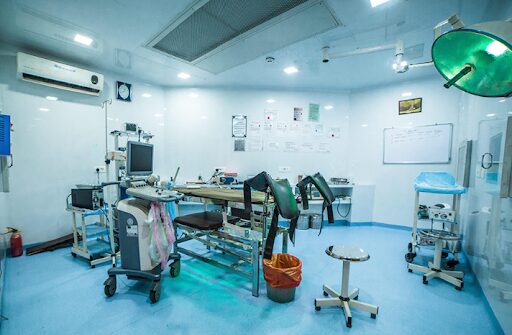Modern IVF has come a long way from the early days of fertilising eggs in a dish and hoping for the best. Today, a range of add-on techniques can help the lab overcome specific hurdles. For example, when sperm movement is poor, when embryos are hard to choose between, or when a couple carries a known genetic condition. The goal is simple: give every embryo the healthiest possible start while keeping treatment safe and personalised for the person undergoing it.
If you’re exploring options in Bengaluru, you’ll find that clinics often tailor treatment plans to the city’s diverse community of tech professionals and young families. It’s common to see searches for an ivf centre in electronic city, a neighbourhood known for its large technology parks and easy access and for clinics that mix convenience with advanced lab capability.
How IVF Works Today
An IVF cycle usually involves ovarian stimulation to grow multiple eggs, egg retrieval, fertilisation in the lab, embryo culture for several days, and then transferring one embryo to the uterus (with any extras frozen).
Many clinics now prefer single-embryo transfer combined with high-quality freezing (“vitrification”), because modern freezing methods give excellent post-thaw survival and similar pregnancy rates to fresh transfer while reducing the risks of twins or triplets.
A key safety point is controlling ovarian stimulation to avoid ovarian hyperstimulation syndrome (OHSS). Updated guidance supports using a GnRH-agonist “trigger” for final egg maturation (and often a freeze-all approach in high-risk patients) to markedly reduce OHSS risk.
ICSI: What is it and When is it Truly Helpful?
ICSI (intracytoplasmic sperm injection) directly injects one sperm into an egg, it is most helpful for clear male-factor infertility and certain lab situations.
ICSI was developed to overcome poor sperm counts, low movement, or previous failed fertilisation. It is also used when sperm are obtained surgically or when using previously frozen oocytes.
As with all IVF, labs balance benefits and risks when choosing ICSI; current guidelines emphasise careful documentation of the reason for ICSI and counselling about alternatives.
Assisted Hatching: When is Making a Tiny Opening Useful?
Creating a small opening in the embryo’s shell (the zona pellucida) can be considered in selected cases, but routine use hasn’t shown clear benefit.
Embryos must “hatch” from their shell before implanting. In some scenarios for e.g., thicker shells after freezing, introducing a tiny laser-made weak spot may help. However, national regulators classify assisted hatching as an add-on with limited or uncertain evidence for improving live-birth rates in most patients; it’s best reserved for specific indications after discussion.
Time-lapse Incubators and AI Embryo Selection: Helpful or Hype?
Time-lapse systems safely record embryo development without removing embryos from the incubator, but high-quality trials have not shown consistent live-birth advantages over conventional methods for most patients.
The promise is that more information (morphokinetics) leads to better selection. Yet recent assessments and reviews find insufficient evidence that time-lapse imaging improves chances of having a baby for the average patient, even though it can be useful for lab workflow and research. Emerging AI tools trained on these videos are promising, but they still need robust, prospective validation before being considered standard of care.
Sperm Selection Upgrades (IMSI, PICSI)
Under powerful microscopes (IMSI) or with hyaluronan binding (PICSI), embryologists try to “pick better sperm,” but large studies show little or no improvement in live-birth for most patients.
IMSI magnifies sperm thousands of times to select the smoothest-looking one; PICSI chooses sperm that bind to a natural substance (hyaluronan), which may correlate with maturity and less DNA damage.
Evidence summaries from regulators rate IMSI and PICSI as not clearly improving live-birth rates in routine practice (with some data suggesting PICSI may reduce miscarriage in certain groups). These techniques might be discussed selectively, but they aren’t magic bullets.
Preimplantation Genetic Testing: PGT-A, PGT-M and PGT-SR
PGT-M (for single-gene disorders) and PGT-SR (for chromosome rearrangements) are well-established for couples with a clear, significant risk of passing on a serious condition.
When a specific pathogenic variant or a parental chromosome rearrangement is known, testing a few embryo cells can identify embryos that are unaffected (or balanced) before transfer. Professional societies provide detailed good-practice recommendations covering patient selection, counselling, biopsy methods, and lab quality control — reflecting that these uses are targeted and clinically meaningful. ICSI is often paired with PGT to minimise contamination from stray sperm DNA.
Freezing and Storing Embryos (Vitrification)
Modern vitrification provides excellent embryo survival after thawing and supports safe single-embryo transfer strategies.
Rapid-cooling vitrification avoids ice crystal damage and has become standard in many labs. Committee guidance reports very high post-thaw survival with comparable pregnancy outcomes to fresh cycles, enabling safer, staged treatment (e.g., freeze-all in high OHSS risk, or spacing transfers).
Long-term storage is generally safe; some data suggest extremely prolonged storage (many years) might modestly lower blastocyst outcomes, which your team will factor into planning.
FAQs
What does an IVF cycle cost in India (in INR)?
Expect roughly ₹1,00,000–₹2,50,000 per cycle on average, with city and clinic variations. Published Indian cost breakdowns commonly place a single cycle in this range, excluding add-ons. Always request an itemised estimate.
What does PGT cost?
Genetic testing is often priced per embryo; figures of ~₹15,000–₹20,000 per embryo are commonly quoted, and total bills depend on how many embryos are tested and the test type (PGT-A vs PGT-M/PGT-SR).
Is the ERA test worth it and what does it cost?
Evidence that ERA improves live-birth for most people is limited; when used, it’s usually for repeated implantation failure. Typical quotes range ~₹35,000–₹40,000 (city-dependent).
Are there risks to IVF and ICSI I should know about?
The common concerns are OHSS (now much less frequent with modern protocols), multiple pregnancy (addressed by single-embryo transfer), and the usual procedure-related risks. Current guidelines emphasise OHSS minimisation and careful embryo-number policies; your clinic should walk you through personalised risk reduction.
If we carry a single-gene condition, is PGT-M reliable?
PGT-M is a well-established way to reduce the chance of passing on many serious single-gene disorders. Good-practice recommendations detail patient selection, counselling, and lab standards; residual risks and confirmation steps (like prenatal testing) should be discussed in advance.
Conclusion
Advanced IVF tools are most effective when they solve a specific problem rather than being used by default. ICSI remains invaluable for clear male-factor issues or past fertilisation failure, PGT-M/PGT-SR are powerful when there’s a known genetic risk in the family, PGT-A may help select embryos in select scenarios but is not a universal booster.
Add-ons like assisted hatching, IMSI/PICSI, or time-lapse imaging should be chosen carefully, if at all. Across all of this, safer stimulation protocols, single-embryo transfer, and reliable freezing make the biggest difference to outcomes while minimising risks.



